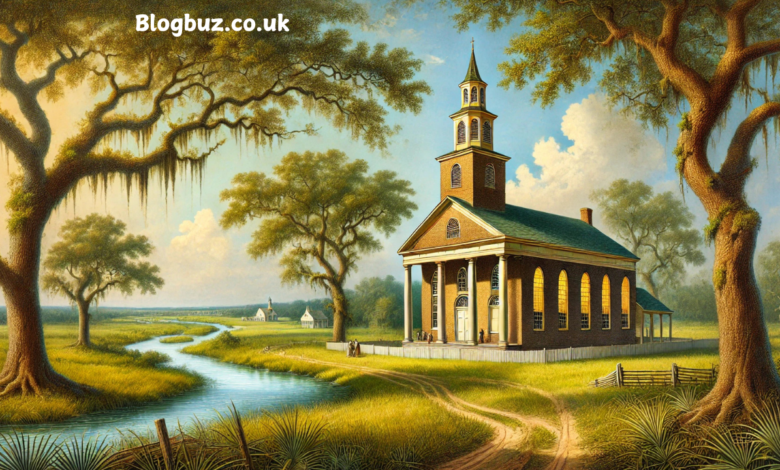Kiokee Where Did They Live on the Savannah River Ga?

The historical Kiokee community, nestled near the Savannah River in Georgia, holds immense cultural and historical significance. Known for its ties to the early Baptist movement in the United States, this area has a rich heritage that offers insight into early American religious, social, and architectural developments. This article explores the origins, settlement patterns, and cultural footprint of the Kiokee community, addressing the intriguing query, “Kiokee: Where did they live on the Savannah River in Georgia?”
Origins of Kiokee: The Savannah River Connection
The Kiokee area derives its name from Kiokee Creek, a tributary of the Savannah River. Historical accounts suggest that the term “Kiokee” may have Indigenous roots, potentially linked to the Cherokee and Creek tribes, who referred to the area as “sweet water” or “Falls Creek.” This etymology reflects the natural allure of the region, characterized by fertile lands and ample water sources vital for settlement and sustenance.
Located near Appling, Georgia, the Savannah River provided the Kiokee settlers with essential resources such as freshwater transportation routes and fertile agricultural lands. The creek and river system played a central role in shaping the lives of the early settlers, from Native Americans to European pioneers.
Kiokee Baptist Church: The Heart of the Community
Kiokee’s most enduring legacy is the Kiokee Baptist Church, established in 1772 by Reverend Daniel Marshall. Known as the oldest continuing Baptist church in Georgia, it became a cornerstone of religious and social life in the area. The church’s establishment coincided with the Great Awakening, a spiritual revival movement that profoundly influenced American Christianity.
The First Meeting House
The congregation initially met in a humble log cabin built by Daniel Marshall. This early structure reflected the settlers’ modest resources and determination to create a spiritual home. Located near Kiokee Creek, the cabin was a focal point for the community until 1792, when a second, larger meeting house was constructed on or near the same site.
The 1808 Brick Church
1808, a more permanent and architecturally significant brick church was erected southeast of Appling. This building still stands today and is celebrated as a historical landmark. The use of durable materials like heart pine wood and thick brick walls illustrates the growing prosperity of the Kiokee community, made possible by the region’s fertile lands and the advent of the cotton gin.
Settlement Patterns Along the Savannah River
The settlers of Kiokee chose their location strategically. The Savannah River and its tributaries offered a combination of resources that made the area highly desirable. Fertile soil allowed for successful farming, particularly cotton cultivation, which became a significant economic driver in the 18th and 19th centuries. The river also operated as a transportation route, facilitating commerce and communication with neighboring settlements.
Economic Growth
The Kiokee community thrived as the agricultural economy expanded. The introduction of Eli Whitney’s cotton gin in 1794 revolutionized cotton production, increasing demand for the fertile lands along the Savannah River. Many settlers became part of the burgeoning plantation system, which shaped the social and economic dynamics of the region.
Cultural and Social Life
Kiokee was more than just a farming settlement; it was a cultural and religious activity hub. The Kiokee Baptist Church played a vital role in uniting the community, offering a space for worship, education, and social gatherings. The church’s leadership, including three generations of the Marshall family, fostered a sense of unity and purpose among the settlers.
Architectural Legacy of Kiokee
The architecture of the Kiokee Baptist Church and other structures in the area reflects the practical yet innovative spirit of the settlers. The 1808 church, with its simple yet sturdy design, stands as a testimony to the craftsmanship of the time. Its features include chamfered columns, heart pine floors, and deep-set windows that allow natural light to flood the interior.
The church’s design also served symbolic purposes. For instance, the elevated central window behind the pulpit creates a halo effect, emphasizing the preacher’s role as a spiritual leader. Such architectural elements highlight the settlers’ deep commitment to their faith and community.
The Role of Kiokee in Early Baptist History
Kiokee’s influence extends beyond its local community. As the first Baptist church in Georgia, it became a model for other congregations, leading to the establishment of numerous Baptist churches throughout the region. The church’s mission work and evangelism contributed to the growth of the Baptist denomination, which remains a significant religious tradition in the United States.
Notable Contributions
- Missionary Efforts: The church sent missionaries to other parts of Georgia and the Southeast, spreading its influence far and wide.
- Educational Initiatives: The church played a role in educating the community, emphasizing literacy and biblical studies.
- Social Reform: Kiokee Baptist Church supported various social causes, reflecting its members’ moral and ethical values.
Preservation of Kiokee’s Heritage
Today, efforts are ongoing to preserve Kiokee’s historical and cultural legacy. The 1808 church building, now a cherished landmark, attracts visitors interested in Georgia’s history and early American architecture. Nearby, the Marshall family cemetery is a poignant reminder of the community’s founders and enduring impact.
Tourism and Education
Kiokee’s historical sites, including the Old Kiokee Baptist Church, offer educational opportunities for visitors. Guided tours and interpretive programs highlight the area’s rich history, from its Native American roots to its role in the Great Awakening.
Conclusion
The Kiokee community’s choice to settle near the Savannah River in Georgia was driven by the region’s abundant natural resources, strategic location, and fertile lands. From its humble origins as a log cabin church in 1772 to its enduring legacy as a center of faith and culture, Kiokee has left an indelible mark on Georgia’s history.
You May Also Read: How to Rent a Wurlitzer Piano in Athens GA for Events & Practice




